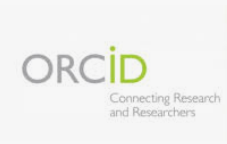Community Clostridium difficile infection associated with idiopathic ulcerative colitis.
Keywords:
Clostridium difficile, ulcerative colitis.Abstract
Clostridium difficile is a bacterium related to antibiotic-associated colitis and diarrhea acquired in hospitalized patients. However, its behavior has changed in recent years to the point of being considered as a global health problem. Its clinical course ranges from asymptomatic cases, colitis to severe complications with risk for the patient’s life. Among the described risk factors, inflammatory bowel disease, especially, idiopathic ulcerative colitis are found. The case reported deals with the presentation of this infection associated to an outbreak of ulcerative colitis in a young patient, with no previous history of inflammatory bowel disease, consumption of antibiotics or hospitalization.
Downloads
References
2. Paciel D, Medina JC. Clostridium difficile: historia de una infección emergente y su manejo actual. An Facultad Med (Univ Repúb Urug) [Internet]. 2015 [citado 19/03/20];2(1):87-5 Disponible en: http://www.anfamed. edu.uy/index.php/rev/article/view/144
3. Abreu AT, Velarde Ruiz Velasco JA, Zavala Solares MR, et al. Consenso sobre prevención, diagnóstico y tratamiento de la infección por Clostridium difficile. Rev Gastroenterol Mex. 2019;84(2):204-19.Citado en PubMed; doi.org/10.1016/j.rgmx.2018.12.001
4. Alcalá Hernández L, Reigadas Ramírez E, Bouza Santiago E. Infección por Clostridium difficile. Medicina Clínica. 2017; 148(10):456-63. Citado en PubMed; doi:10.1016/j.medcli.2017.01.033
5. Ofosu A. Clostridium difficile infection: A review of current and emerging therapies. Ann Gastroenterol. 2016; 29:147-54. Citado en PubMed; doi: 10.20524/aog.2016.0006
6. Schäffler H, Breitrück A. Clostridium difficile–From Colonization to Infection. Microbiol. 2018;9:646. Citado en PubMed; doi:10.3389/fmicb.2018.00646
7. Chandrasekaran R, Lacy B. The role of toxins in Clostridium difficile infection. FEMS Microbiol Rev. 2017; 41:723-50. Citado en PubMed; doi: 10.1093/femsre/fux048
8. Uptodate [Internet]. Thomas Lamont J. Clostridium difficile infection in adults: Clinical manifestations and diagnosis. [Internet]. 2016[citado 19/03/20]. Disponible en: http://www.uptodate.com/
9. MacDermott R. Management of mild to moderate ulcerative colitis in adults. Dig Dis. 2015;33 Suppl1:90-94. Citado en PubMed; doi:10.1159/000437087
10. Falces Romero I, Troyano Hernáez P, García Bujalance S, et al. Detección de Clostridium difficile toxigénico en pediatría. Enferm Infecc y Microbiol Clín. 2018;36(6):357-61. Citado en PubMed; doi:10.1016/j.eimc.2017.05.006
11. Uptodate [Internet]. Scott B Snapper, Abraham C. Immune and microbial mechanisms in the pathogenesis of inflammatory bowel disease. [sede Web]. 2019. Disponible en: https://www.uptodate.com
12. American Society for Gastrointestinal Endoscopy Standards of Practice Committee, Shergill AK, Lightdale JR. The role of endoscopy in inflammatory bowel disease. Gastrointest Endosc. 2015;81(5):1101-21. Citado en PubMed; doi :10.1016/j.gie.2014.10.030
13. Subramanian V, Chatu S, Echterdiek F, et al. Patients with Endoscopically visible polypoid adenomatous lesions within the Extent of Ulcerative Colitis have an increased risk of colorectal cancer despite endoscopic resection. Dig Dis Sci. 2016;61(10):3031-36. Citado en PubMed; doi:10.1007/s10620-016-4246.
14. Ofosu A. Clostridium difficile infection: A review of current and emerging therapies. Ann Gastroenterol. 2016; 29:147-54. Citado en PubMed; doi:10.20524/aog.2016.0006
15. Barra Carrasco J, Hernández Rocha C, Ibáñez P, et al. Esporas de Clostridium difficile y su relevancia en la persistencia y transmisión de la infección. Rev Chil infectol[Internet]. 2014[citado 19/03/20];31:694-703. Disponible en: http://dx.doi.org/10.4067/s0716-10182014000600010
16. Dae Bum K, kang Moon L. Is Clostridium difficile infection a real threat in patients with ulcerative colitis? Intest Res[Internet]. 2018[citado 19/03/20];16(2):267-72. Disponible en: https://www.ncbi.nlm.nih.gov/pmc/articles/PMC5934599/
17. Alcalá Hernández L , Mena Ribas A, Niubó Bosh J, et al. Diagnóstico microbiológico de la infección por Clostridium difficile. Enferm Infecc Microbiol Clin. 2016;34(9):595-602. Citado en PubMed; doi: 10.1016/j.eimc.2015.09.004
18. García García de Paredes A, Rodríguez de Santiago E, Aguilera Castro L, et al. Transplante de microbiota fecal. Gastroenterol-Hepatol[Internet]. 2015[citado 19/03/20];38(3):123-34. Disponible en: www.elsevier.es/gastroenterologia
19. Ramos Martínez A, Ortiz Balbuena J, Curto García I, et al. Factores de riesgo de diarrea por Clostridium difficile en pacientes con enfermedad inflamatoria intestinal. Rev Esp Enferm Dig[Internet]. 2015[citado 19/03/20];107:4-9. Disponible en: https://www.scielo.isciii.es
20. Binion D. Clostridium difficile Infection and Inflammatory Bowel Disease. Gastroenterol Hepatol[Internet]. 2016[citado 19/03/20];(1295):334-7. Disponible en: https://www.ncbi.nlm.nih.gov/pmc/articles/PMC4973566/
21. Kaneko T, Matsuda R, Taguri M, et al. Clostridium difficile infection in patients with ulcerative colitis: Investigations of risk factors and efficacy of antibiotics for steroid refractory patients. Clin Res Hepatol Gastroenterol. 2011;5:315-20. Citado en PubMed; doi: 10.1016/j.clinre.2011.02.004.
22. Berg AM, Kelly CP, Farraye FA. Clostridium difficile infection in the inflammatory bowel disease patient. Inflamm Bowel Dis. 2013; 19:194-204. Citado en PubMed; doi:10.1002/ibd.2296.
23. Negrón ME, Rezaie A, Barkema HW, et al. Ulcerative colitis patients with Clostridium difficile are at increased risk of death, colectomy, and postoperative complications: a population-based inception cohort study. Am J Gastroenterol. 2016;111(5):691. Citado en PubMed; doi:10.1038/ajg.2016.106.
24. T, Safdar N. Current trends in the epidemiology and outcomes of Clostridium difficile infection. Clin Infec Dis. 2015; 60 (2): S66–S71. Citado en PubMed;doi.org/10.1093/cid/civ140.
25. Seekatz AM, Vincent B. Clostridium difficile and the microbiota. Clin Invest. 2014;124(10):4182–89. Citado en PubMed; PMID: 25036699.
26. Oñate Gutiérrez JM, Segura J, Correa A, et al. Infección por Clostridium difficile: descripción de las cepas NAP1/027 y de otros serotipos en un centro de alta complejidad de Cali, Colombia. Biomédica[Internet]. 2019[citado 19/03/20];39(Supl.1):63-70. Disponible en: https://revistabiomedica.org/index.php/biomedica/article/view/3950/4315
27. Ben Horin S, Margalit M, Bossuyt P, et al. Prevalence and clinical impact of endoscopic pseudomembranes in patients with inflammatory bowel disease and Clostridium difficile infection. J Crohns Colitis. 2010;4(2):194-8. Citado en PubMed; doi.org/10.1016/j.crohns.2009.11.001
Published
How to Cite
Issue
Section
License
All content published in this journal is Open Access, distributed under the terms of the CC BY-NC 4.0 License.
It allows:
- Copy and redistribute published material in any medium or format.
- Adapt the content.
This will be done under the following terms:
- Attribute the authors' credits and indicate whether changes were made, in which case it must be in a reasonable way.
- Non-commercial use.
- Recognize the journal where it is published.
The copyrights of each article are maintained, without restrictions.





